Program Case Study
Fledging a Microhabitat Program
Lessons from the Ojai Valley Land Conservancy’s program “Rewild Ojai”
By Tripti Thomas-Travers and Tom Chase, based on interviews with Tom Maloney and Tania Parker at the Ojai Valley Land Conservancy. August 8, 2023.
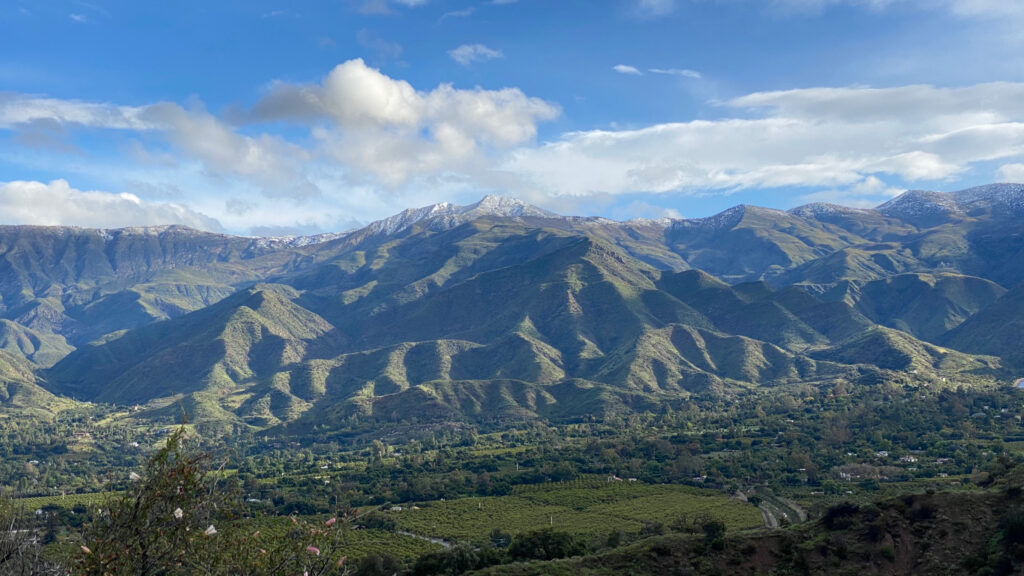
Summary
Rewild Ojai, an emerging microhabitat program of the Ojai Valley Land Conservancy (OVLC), aims to restore ecosystem function and increase climate resilience in the changing landscape of the Ojai Valley. By involving homeowners in choosing native plants to re-naturalize their yards, the program expects to increase awareness around land and water use; build a culture of stewardship; and drive larger-scale restoration efforts in the area.
Two messages have resonated strongly with the local community: the need for habitat connectivity and the power of personal agency in combating macro-level environmental problems. Given the enthusiastic community response and forthcoming policy changes mandating native plant use in landscaping, Rewild Ojai anticipates a lot of demand. Prior to launching the program, staff are investing in establishing all the elements they believe will be essential for program success: expanding and redesigning the existing OVLC nursery; launching a responsible strategy for collecting and cultivating seeds and cuttings of local-genotypic native plants; developing a compelling brand and marketing strategy; building out informational and educational resources for homeowners and landscape professionals; and crafting all aspects of the yard certification and signage program.
New and aspiring microhabitat programs may learn much from Rewild Ojai’s early efforts and successes:
- Securing longer-term funding
- Ensuring access to native plants
- Leveraging volunteer resources
- Anchoring brand/marketing in the community’s unique needs and character
- Establishing programmatic elements upfront to meet program demand after launch
Introduction
Rewild Ojai is an emerging microhabitat program of the Ojai Valley Land Conservancy (OVLC), an organization with a mission “to protect and restore the natural landscapes of the Ojai Valley forever.” The program appears to be off to a great start. As other organizations might learn from its early development, Village and Wilderness caught up with Tom Maloney and Tania Parker, OVLC’s Executive Director and Deputy Director respectively, to learn more about the conception and launch of this new initiative.
About the Ojai Valley
Situated in Ventura County, some 70 miles from Los Angeles and 12 miles inland from the Pacific Ocean, the Ojai Valley is a world-renowned tourist destination and home to celebrities, artisans, hippies and spiritualists. The median household income is above $75,000, the average cost of a single-family home is over $1 million, and the cost of living is among the highest in the country. While these numbers indicate affluence, they mask wider economic diversity, which find expression, for example, in competing needs for affordable housing and limited overdevelopment.
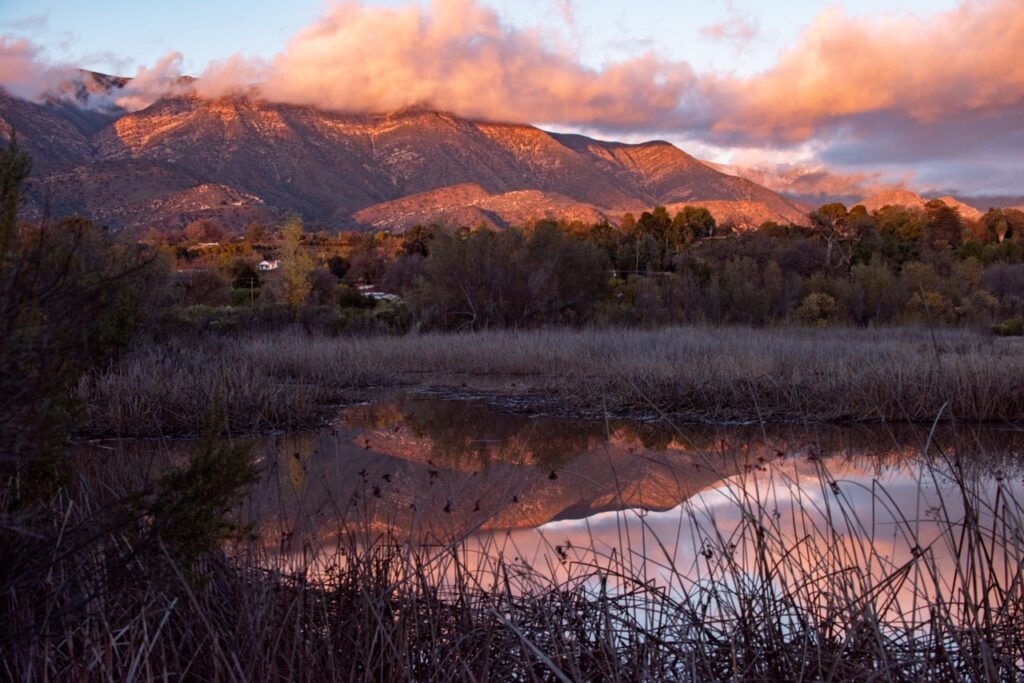
The Valley occupies a special geological and ecological aspect: part of the Transverse Western Ranges of Southern California, it bisects the habitat-rich areas of Los Padres National Forest to the north and Sulphur and Black Mountain to the south. While it has long been celebrated for its Mediterranean climate, conditions are heating up rapidly, with Ventura County not long ago being designated the fastest-warming county in the continental US. The Valley is also one of the rare Southern California communities that is not connected to state water supply infrastructure from the north and thus entirely dependent upon local precipitation. Recent floods notwithstanding, the area, which includes extensive eucalyptus corridors and post-war citrus orchards, finds itself in a decadal drought cycle.
Concerns around habitat loss and fragmentation, water use, land use and a potential diminution of Ojai’s rural character are at the forefront for an organization like OVLC. Rewild Ojai emerged when these concerns converged with (a) evidence of the rapid, landscape-scale transition out of agriculture without succession plans for the land, as citrus and avocado orchards are being retired, and (b) Parker’s passion for ramping up the use of native plants throughout the Valley, inspired by the work of Doug Tallamy.
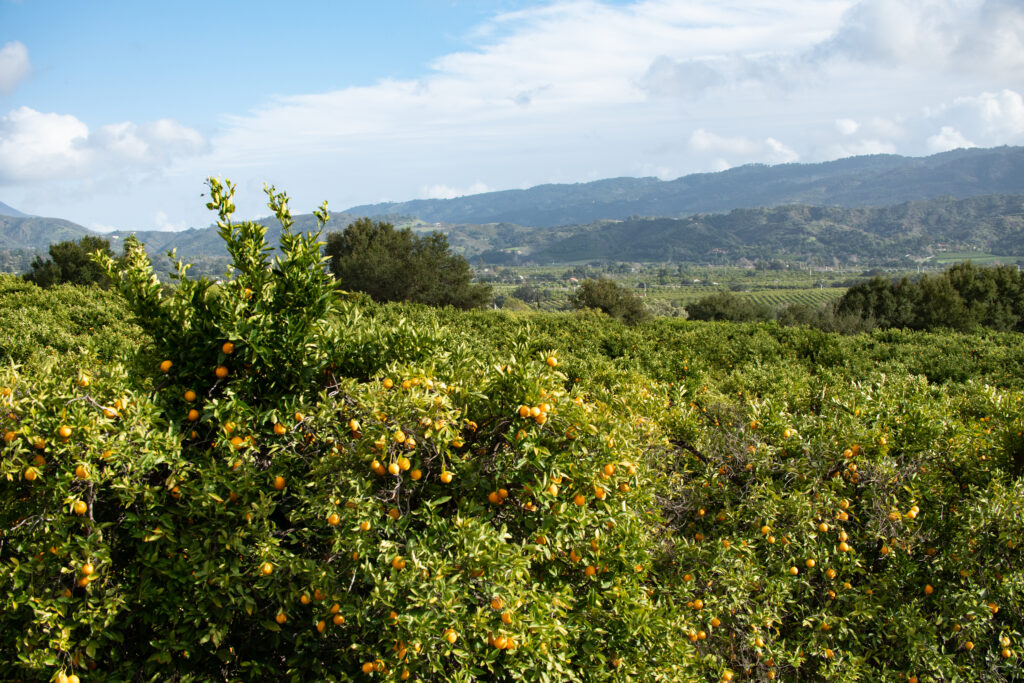
Rewild Ojai: the theory of change
Rewild Ojai aims at restoring ecosystem function in the developed landscape of the Ojai Valley, to increase the resilience of its communities of people, wildlife and plants in the face of climate change. It is based on the theory that involving homeowners in successful and visible personal-scale decisions around native-plant choices for their yards will drive program recognition and credibility, thus providing access to restoration efforts on larger private acreage (such as school campuses and orchards), and eventually opening the way for conversations and change around habitat connectivity, water conservation, land use and climate-resilience at a macro level. “Although the program is granular (yard by yard), there are also large-scale concepts within which the program is framed,” observes Maloney. Underlying the initiative lies a commitment to expanding the quantity, diversity and accessibility of local-genotypic native plants to meet the anticipated increase in community demand.
When proposed, this integrated concept and theory of change resonated strongly with OVLC’s Board. There were some Board and community concerns about fire-safety in the urban interface and the promotion of native chaparral species, some of which are fire-prone. OVLC will need to continue to allay these concerns through information and case studies demonstrating that ecologically barren yards fare worse in wildfire outbreaks, and that certain features of building design are more effective than mineral- and vegetation-breaks in mitigating residential susceptibility to wildfires. Eventually, Rewild Ojai received the green light, and planning got underway in early 2022.
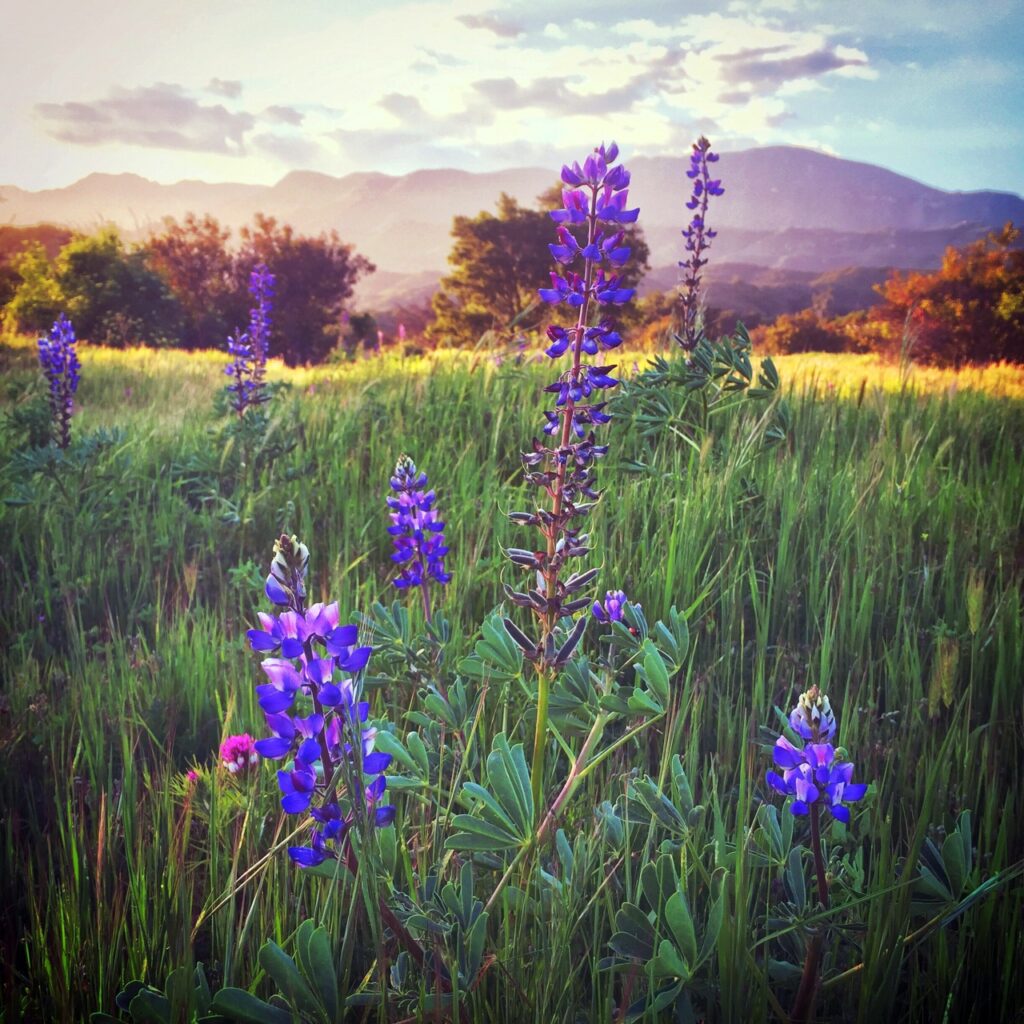
The brass tacks: business plan, budget and staffing
To get started, OVLC prepared a three-year outlook for Rewild Ojai. “The goal was that at the end of three years, we would have created the infrastructure and marketplace so that Rewild Ojai could be a self-sustaining entity,” says Parker. A major advantage was OVLC’s Ojai Meadows Preserve Native Plant Nursery: Starting a nursery from scratch can be a prohibitively expensive undertaking, but OVLC already had this asset in place. The nursery was founded in 2007 to supply plants for OVLC’s restoration work at the Ojai Meadows Preserve. It has since continued to operate by growing plants for government grants and mitigation projects to restore habitat throughout OVLC’s preserves. However, Parker and Maloney reasoned that creating a self-sustaining vision for the Rewild Ojai program relied upon a funding model that incorporated more government grants, expanded wholesale and retail native plant sales, contract growing, and consulting fees from large-scale private restorations.
OVLC planned to fundraise for the nursery expansion and program start-up over three years, but raised the funds in just a few months. Initial funding came from private donors and a government grant. The initial funds raised almost doubled from the initial budget (which Parker, in hindsight, admits was underestimated) and allowed for planning a “dream nursery” that could be efficient and productive but also a welcoming community hub and teaching center. Now Parker and the Restoration Program Director guide the program, and the position of Nursery Manager was added to bring a strong focus on the business development side. The Nursery Manager will integrate and support a full-time Native Plant Specialist who will lead the seed collection and horticultural elements of the plant production. The nursery operation is also supported by two part-time high school interns who are funded annually through a private grant. The overall 3-year runway to get the program off the ground is estimated at around $525K, of which all but $100K have been raised. Having almost doubled the funds originally anticipated, OVLC is able to implement the three-year outlook without taking on unnecessary risk.
The existing OVLC nursery is slated for a major renovation. The new design will increase capacity and make the space more welcoming and accessible. Photo source: Ojai Valley Land Conservancy
Identifying compelling messages and policy drivers
As Parker and Maloney have taken the concept out on the road, they have found that two messages resonate powerfully in the community:
- Habitat connectivity: By virtue of its geographic location, Ojai Valley is potentially an important wildlife and native-pollinator corridor between the surrounding mountains and nature preserves. This concept was new to many community members, and people have been inspired by the idea that the choices they make in their own yards, in a developed area, can nevertheless enhance connectivity and mitigate habitat fragmentation.
- Personal agency: The sense of individual power to meaningfully help in the face of the enormity of climate change and biodiversity decline. “A lot of us feel so helpless when it comes to climate change and there’s not a lot we can do,” says Parker. “We are empowering people, showing them they can make a difference…By planting this one native plant, this one oak, it’s going to support all these species and you will make a difference. I think it is one of the biggest reasons people are participating. And then, when they start to buy in, they start to get really excited about the life they are seeing in their yard.”
Rewild Ojai is doubling-down on these messages when it comes to branding and marketing. Early indications are that once fully launched, demand for the program may be dramatic. For example, at the Spring 2023 nursery sale alone, retail customers purchased nearly 1,000 plants over the course of just one Friday evening and Saturday morning.
Two new policy developments are also anticipated to greatly influence demand: Ventura County has passed an ordinance amendment specifying that native vegetation must comprise at least 50% percent of plant types in new or retrofitted landscape areas. Pending state legislation aims to soon mandate that all new and renovated non-residential development must be landscaped with increasing minimum percentages of native plants from potentially 25% in 2026 up to 75% after 2035.
From pollinators to reptiles, birds, and mammals, the area is home to a wide diversity of wildlife. Photo source: Ojai Valley Land Conservancy
Setting the scene for success
Prior to program launch, and in anticipation of mushrooming demand, OVLC has already decided to establish the following elements, each of which they believe is essential for a successful program:
1. An expanded, inviting nursery:
In this region, where most private nurseries that sell native plants are a minimum of an hour’s drive away, providing easy access to plants becomes not just a resource, but an attraction. While earlier the nursery was open only for two plant sales a year, OVLC now has a more inclusive and expansive vision in mind: “We want the nursery to be a welcoming place, a place that gets more use and where people can gather,” says Parker. The new nursery design includes spaces for small events and a convertible space for meetings, teaching and other needs. A covered workspace will provide shade and support for solar panels. The structures and surroundings will be designed to feel warm and welcoming, without the chain link and barbed wire that currently encloses the nursery. In addition, the surrounding landscaping will provide plants for gathering seeds, cuttings and bulbs in bulk, to minimize gathering from wild populations. (Parker notes that current gathering practices are already conducted sustainably and under strict protocols to prevent overharvesting of wild populations). The 3-year outlook now encompasses additional plant sales during the year, as well as year-round contract orders and wholesale availability. OVLC is considering other models for expanded community access, such as extending the buying season via online sales for pick-up on a set day of the week, and selling plants to and through other local nurseries for wider distribution.
Opening and expanding the market in this way entails (a) a significant investment in nursery infrastructure, which is being upgraded with largely pro bono design services from local professionals; (b) an ambitious effort to collect local seeds and cuttings to ensure that all the plants are of local genotype; and (c) arrangements to diversify the kinds and sizes of plants, by going beyond what OVLC has traditionally grown for restoration to what homeowners and landscapers will want for private yards.
A robust seed collection and processing effort builds reserves for producing local-genotypic native plants for Rewild Ojai and for OVLC’s broader restoration work. Photo source: Ojai Valley Land Conservancy
2. Branding and Marketing:
The name Rewild Ojai emerged from a chance comment. A community member was overheard saying she was going to “rewild” her yard with OVLC’s restoration service. Thus was born the name, followed by graphic design and brand development provided pro-bono by a donor. Parker’s vision for the brand and accompanying swag anchored on something specific: “I told the designers that one goal for our branding should be something that works for a sticker that everybody wants on their car. We want it to be cool and inclusive, something everyone will recognize and want to be a part of, that combines elements of our current logo with the new program element, and conveys a lot of pride in our community.” The emphasis on stickers? That’s just Ojai, attests Parker, where residents love using stickers on their cars and water bottles to signal the causes with which they align. Parker sees it as essential to have the branding, stickers, other swag and handouts at the ready well before launch, so that Rewild Ojai is set-up to quickly achieve brand recognition and attract participants.
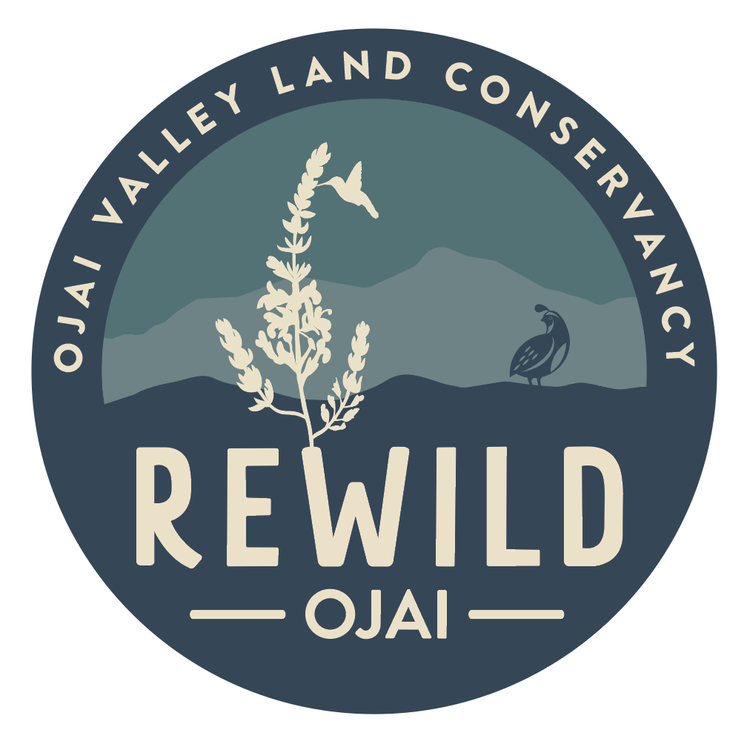
3. A robust website:
With the help of pro bono technical services, the organization’s website is being redesigned and will include a section on the program that is a thorough and informative resource for the public and program participants. An ancillary benefit is to reduce demands on limited staff time to answer routine questions and thereby extend capacity.
4. Concurrent programming and education:
OVLC is developing a full roster of events to accompany the program. Anticipated features include a Native Plant Month, talks and educational events for landowners, and tours of demonstration gardens.
Another offering will be an educational program for landscape professionals. When OVLC conducted landscaper meetings at the outset, they learned that while landscapers are on board with native plants, they struggle with several challenges. One key concern is the expectations of clients, who may for instance want the instant gratification of large plants instead of plugs, and familiar plant choices like rosemary. “There needs to be a big shift in perception about what yards should be and should look like and we need to help landscapers have those conversations with their clients,” Parker states. For instance, in this Mediterranean climate, natives can hit a dormant period for part of the year and people need to adjust to those natural cycles, which can differ from other regions. Another issue they face is the training of installation and maintenance crew, who are often unfamiliar with the specific requirements of native plantings.
To meet these needs, OVLC has partnered with the Theodore Payne Foundation to make its California Native Plant Landscaper Certificate Program available to Ojai Valley landscapers. An initial cohort of 30 will go through this 4-week program in Fall 2023 via a mix of self-paced, online and hands-on instruction, conducted in both English and Spanish. The course covers everything from native plant identification to irrigation efficiency, landscaping techniques, site evaluation and client marketing. Certified landscapers will get a discount at the OVLC nursery, and be retained on an internal list available to share with program participants upon request.
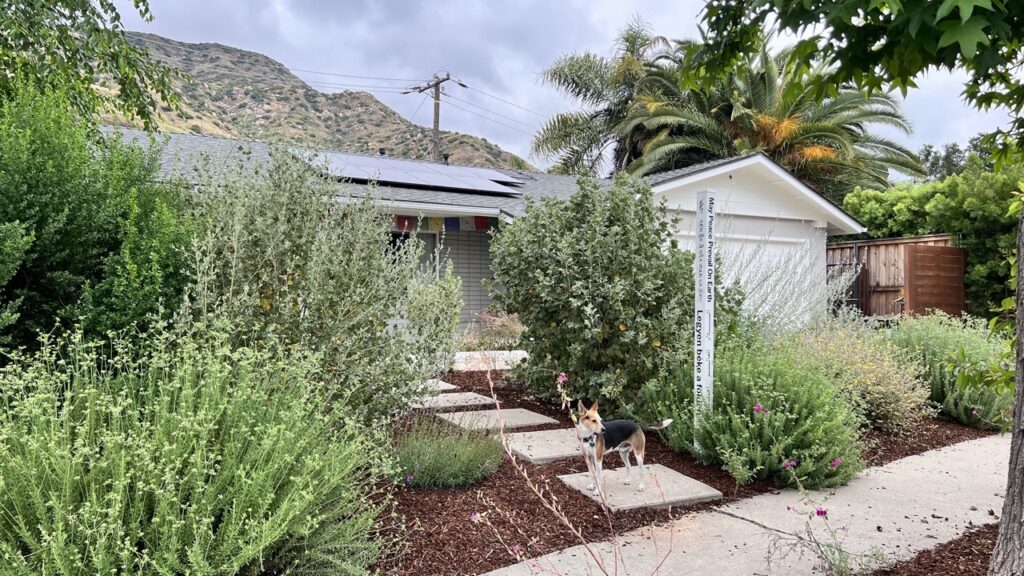
5. Certification and yard sign program:
This central aspect of the program will emphasize broad participation via graduated levels of certification. “Gardening and buying plants is expensive, so we want to set a low barrier to entry and have different levels where you can eventually reach a gold standard. We want everybody to feel like they can be a part of it,” says Parker. She anticipates engaging volunteers to conduct yard visits and make recommendations. A plan is underway to partner with local Master Gardeners, who need to fulfill volunteer hours on an ongoing basis. An OVLC volunteer who is also a Master Gardener board member aims to deliver native plant education through the Master Gardener program and thus help develop an effective cadre of volunteers for Rewild Ojai. When it comes to plant recommendations, Maloney underscores that in such an extreme climate, it is critical to take into account landscape conditions, emphasizing the importance of the capacity to provide hyper-localized, site-specific recommendations. On a south facing slope for example, establishing oaks would be futile, and the landowner would be better served by being steered toward chaparral species.
The certification and yard sign program aims to dovetail with the Homegrown National Park (HNP) initiative. Program participants will be encouraged to register themselves on the HNP map after achieving certain levels of certification. “This will be an additional selling point,” Parker notes. “Support your local yard sign program, and then join this national movement.” Currently only two yards in the area are registered on the map, and one is Parker’s own. The only way is up!
Reflecting on the main learning from the past year-and-a-half since the inception of the idea of Rewild Ojai, Parker notes: “I do think that it has been a good decision for us to take it slow and not launch until everything is ready…I think if we launched and we were not fully able to support the community, there would be disappointment and the initiative could fall flat.”
Measuring success and some takeaways
Defining the metrics for success for a nascent program is an ongoing effort. Eventually, Parker says, external/ecological measures of success may include “how much biodiversity the conversion to native species supports—and to see if there is a balance we can create between a fire-fuel mosaic and biodiversity.”
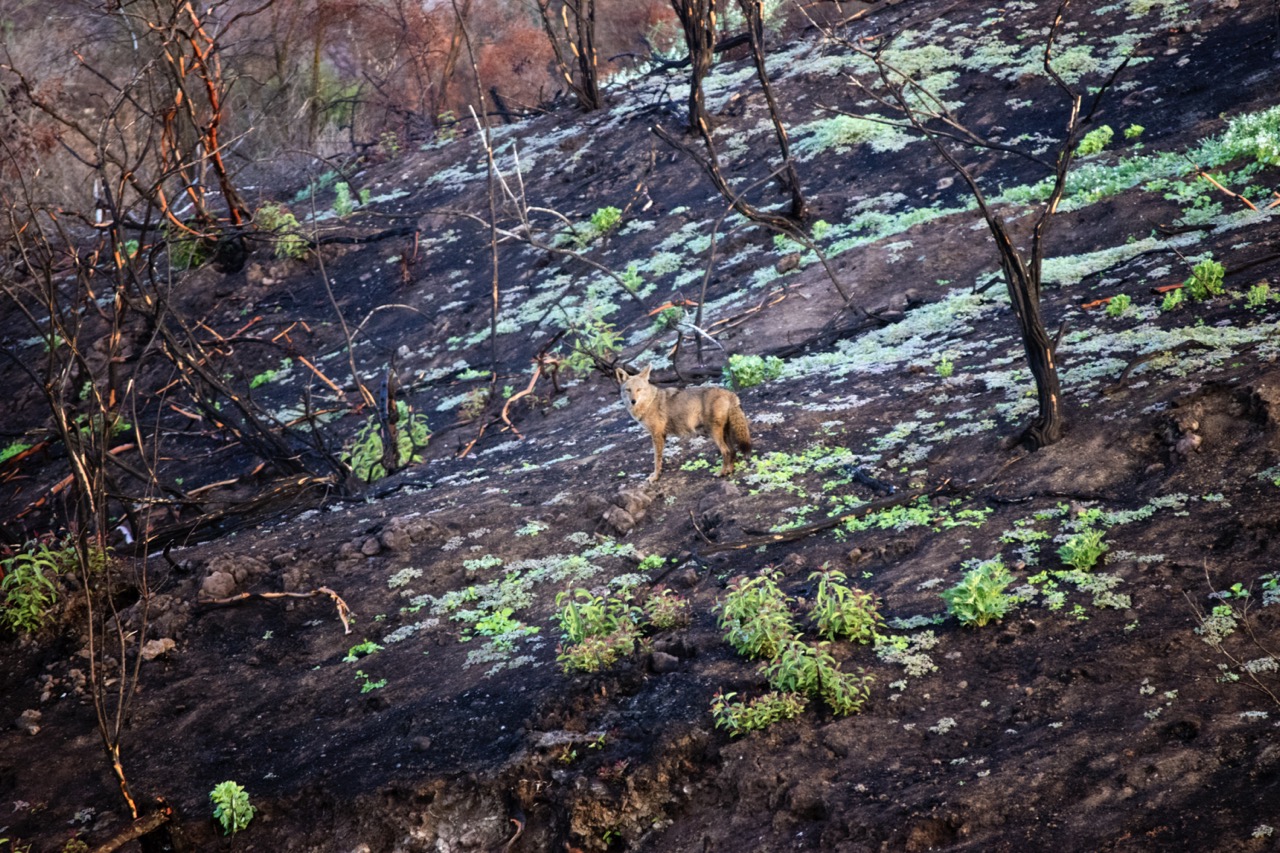
Meanwhile, some internal quantitative and qualitative measures to determine short-term success are already in place. These include, for example, completing the infrastructure to support the expanded nursery, nursery sales of 15,000 plants by Year 2, and tracking growth in properties participating in the yard sign program. Over the longer term, success will be determined by whether Rewild Ojai is perceived as the go-to place for rewilding as measured by the number and acreage of properties engaging with Rewild Ojai on restoration work. Maloney also envisions a time when this will open up conversations with entities such as water supply companies, to incentivize, for example, the choice to convert an orchard to an oak woodland through rate changes.
We look forward to catching up with Rewild Ojai after its official launch and beyond, to document what other lessons they have learned along the way. Meanwhile, here are some takeaways that OVLC proposes for other fledgling microhabitat programs:
- Ensure access to native plants: While building a nursery from scratch is likely cost-prohibitive for most, organizations with existing nurseries may have an excellent launchpad for a microhabitat program that could, in turn, sustain and even grow nursery operations. One way or the other, affordable and easy access to ecotypic native plants, either through an in-house nursery or through partnerships and incentives with private nurseries is an essential element. At the end of the day, supply must meet demand. On this point Parker reflects, “Starting a nursery to fund a program would be a huge undertaking. However it is not clear that a program could take off without easy access to a good nursery.”
- Anchor messaging in knowledge of the specific community: Concepts such as wildlife/pollinator habitats, habitat connectivity, and environmental empowerment at the individual scale are compelling concepts to incorporate into marketing and fundraising. In the case of Rewild Ojai, branding and marketing also respond to the particular culture of the community.
- Start with high net worth donors. Large donations can form the base that potentially begets smaller donations down the road. Together they build a sustainable pyramid of donors, typical of a campaign one might do for a capital project.
- Include the needs of the professional landscaping community—designers, installers, maintenance companies, in program design and educational efforts. They are a vital conduit to achieving scale and sustainability in microhabitat efforts.
- Tap into the organization’s volunteer and donor community for expertise: As Rewild Ojai demonstrates, donors and volunteers can be excellent sources of support with branding, marketing and technology.
- Invest upfront in thinking through and establishing essential programmatic elements before launch, so that the program can meet expectations, succeed, and beget even more success.
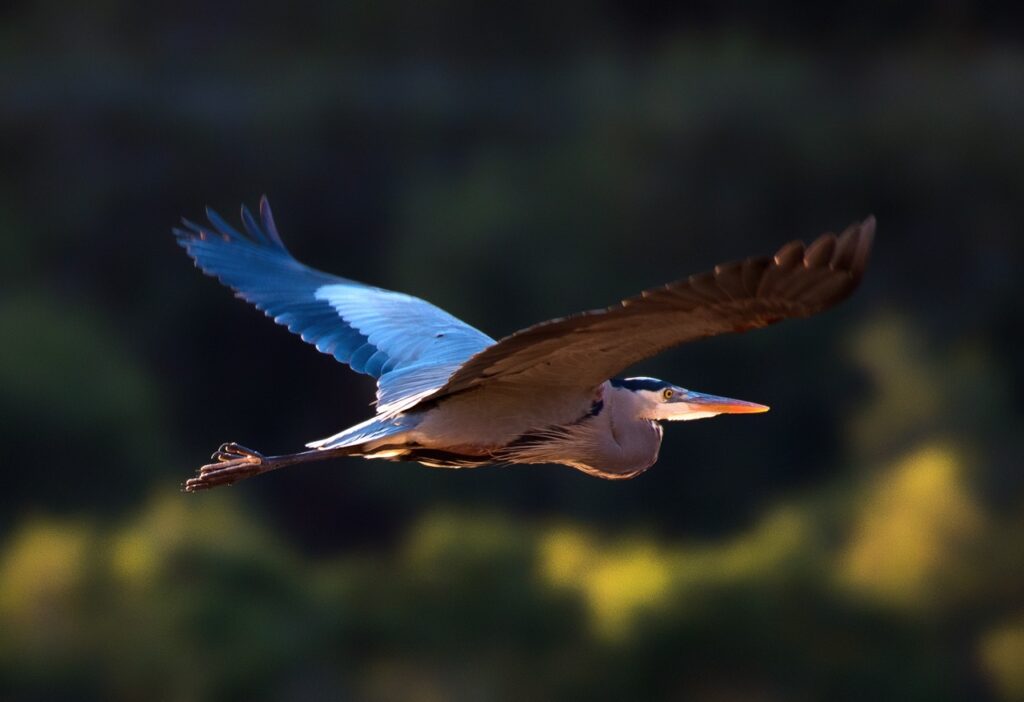
Village and Wilderness amplifies the work of community-based innovators by supporting efforts to discover, prove and share replicable climate adaption strategies. Our flagship project is the Microhabitat Program Incubator.
This case study is part of a series of written resource materials that Village and Wilderness is developing to share lessons and best-practices across existing and emerging microhabitat programs.
What is a Microhabitat Program?
Community-based programs designed to convert small patches of land into ecologically useful habitat are emerging everywhere. From rewilding private land, to establishing urban shade gardens, bioswales and pollinator-friendly roadside verges and farmland margins—restoring ecosystem function in the fragmented landscape is the common theme.
While “backyard habitat programs” is a term that has been commonly used to describe many of these efforts, we propose more encompassing terms—such as microhabitat programs. We believe that these programs are part of a broader movement comprising the universe of community-based and individual efforts and to restore ecosystem function and ecological productivity to the fragmented landscape.
Program Case Study
Fledging a Microhabitat Program
Lessons from the Ojai Valley Land Conservancy’s program “Rewild Ojai”
By Tripti Thomas-Travers and Tom Chase, based on interviews with Tom Maloney and Tania Parker at the Ojai Valley Land Conservancy. August 8, 2023.

Summary
Rewild Ojai, an emerging microhabitat program of the Ojai Valley Land Conservancy (OVLC), aims to restore ecosystem function and increase climate resilience in the changing landscape of the Ojai Valley. By involving homeowners in choosing native plants to re-naturalize their yards, the program expects to increase awareness around land and water use; build a culture of stewardship; and drive larger-scale restoration efforts in the area.
Two messages have resonated strongly with the local community: the need for habitat connectivity and the power of personal agency in combating macro-level environmental problems. Given the enthusiastic community response and forthcoming policy changes mandating native plant use in landscaping, Rewild Ojai anticipates a lot of demand. Prior to launching the program, staff are investing in establishing all the elements they believe will be essential for program success: expanding and redesigning the existing OVLC nursery; launching a responsible strategy for collecting and cultivating seeds and cuttings of local-genotypic native plants; developing a compelling brand and marketing strategy; building out informational and educational resources for homeowners and landscape professionals; and crafting all aspects of the yard certification and signage program.
New and aspiring microhabitat programs may learn much from Rewild Ojai’s early efforts and successes:
- Securing longer-term funding
- Ensuring access to native plants
- Leveraging volunteer resources
- Anchoring brand/marketing in the community’s unique needs and character
- Establishing programmatic elements upfront to meet program demand after launch
Introduction
Rewild Ojai is an emerging microhabitat program of the Ojai Valley Land Conservancy (OVLC), an organization with a mission “to protect and restore the natural landscapes of the Ojai Valley forever.” The program appears to be off to a great start. As other organizations might learn from its early development, Village and Wilderness caught up with Tom Maloney and Tania Parker, OVLC’s Executive Director and Deputy Director respectively, to learn more about the conception and launch of this new initiative.
About the Ojai Valley
Situated in Ventura County, some 70 miles from Los Angeles and 12 miles inland from the Pacific Ocean, the Ojai Valley is a world-renowned tourist destination and home to celebrities, artisans, hippies and spiritualists. The median household income is above $75,000, the average cost of a single-family home is over $1 million, and the cost of living is among the highest in the country. While these numbers indicate affluence, they mask wider economic diversity, which find expression, for example, in competing needs for affordable housing and limited overdevelopment.

The Valley occupies a special geological and ecological aspect: part of the Transverse Western Ranges of Southern California, it bisects the habitat-rich areas of Los Padres National Forest to the north and Sulphur and Black Mountain to the south. While it has long been celebrated for its Mediterranean climate, conditions are heating up rapidly, with Ventura County not long ago being designated the fastest-warming county in the continental US. The Valley is also one of the rare Southern California communities that is not connected to state water supply infrastructure from the north and thus entirely dependent upon local precipitation. Recent floods notwithstanding, the area, which includes extensive eucalyptus corridors and post-war citrus orchards, finds itself in a decadal drought cycle.
Concerns around habitat loss and fragmentation, water use, land use and a potential diminution of Ojai’s rural character are at the forefront for an organization like OVLC. Rewild Ojai emerged when these concerns converged with (a) evidence of the rapid, landscape-scale transition out of agriculture without succession plans for the land, as citrus and avocado orchards are being retired, and (b) Parker’s passion for ramping up the use of native plants throughout the Valley, inspired by the work of Doug Tallamy.

Rewild Ojai: the theory of change
Rewild Ojai aims at restoring ecosystem function in the developed landscape of the Ojai Valley, to increase the resilience of its communities of people, wildlife and plants in the face of climate change. It is based on the theory that involving homeowners in successful and visible personal-scale decisions around native-plant choices for their yards will drive program recognition and credibility, thus providing access to restoration efforts on larger private acreage (such as school campuses and orchards), and eventually opening the way for conversations and change around habitat connectivity, water conservation, land use and climate-resilience at a macro level. “Although the program is granular (yard by yard), there are also large-scale concepts within which the program is framed,” observes Maloney. Underlying the initiative lies a commitment to expanding the quantity, diversity and accessibility of local-genotypic native plants to meet the anticipated increase in community demand.
When proposed, this integrated concept and theory of change resonated strongly with OVLC’s Board. There were some Board and community concerns about fire-safety in the urban interface and the promotion of native chaparral species, some of which are fire-prone. OVLC will need to continue to allay these concerns through information and case studies demonstrating that ecologically barren yards fare worse in wildfire outbreaks, and that certain features of building design are more effective than mineral- and vegetation-breaks in mitigating residential susceptibility to wildfires. Eventually, Rewild Ojai received the green light, and planning got underway in early 2022.

The brass tacks: business plan, budget and staffing
To get started, OVLC prepared a three-year outlook for Rewild Ojai. “The goal was that at the end of three years, we would have created the infrastructure and marketplace so that Rewild Ojai could be a self-sustaining entity,” says Parker. A major advantage was OVLC’s Ojai Meadows Preserve Native Plant Nursery: Starting a nursery from scratch can be a prohibitively expensive undertaking, but OVLC already had this asset in place. The nursery was founded in 2007 to supply plants for OVLC’s restoration work at the Ojai Meadows Preserve. It has since continued to operate by growing plants for government grants and mitigation projects to restore habitat throughout OVLC’s preserves. However, Parker and Maloney reasoned that creating a self-sustaining vision for the Rewild Ojai program relied upon a funding model that incorporated more government grants, expanded wholesale and retail native plant sales, contract growing, and consulting fees from large-scale private restorations.
OVLC planned to fundraise for the nursery expansion and program start-up over three years, but raised the funds in just a few months. Initial funding came from private donors and a government grant. The initial funds raised almost doubled from the initial budget (which Parker, in hindsight, admits was underestimated) and allowed for planning a “dream nursery” that could be efficient and productive but also a welcoming community hub and teaching center. Now Parker and the Restoration Program Director guide the program, and the position of Nursery Manager was added to bring a strong focus on the business development side. The Nursery Manager will integrate and support a full-time Native Plant Specialist who will lead the seed collection and horticultural elements of the plant production. The nursery operation is also supported by two part-time high school interns who are funded annually through a private grant. The overall 3-year runway to get the program off the ground is estimated at around $525K, of which all but $100K have been raised. Having almost doubled the funds originally anticipated, OVLC is able to implement the three-year outlook without taking on unnecessary risk.
The existing OVLC nursery is slated for a major renovation. The new design will increase capacity and make the space more welcoming and accessible. Photo source: Ojai Valley Land Conservancy
Identifying compelling messages and policy drivers
As Parker and Maloney have taken the concept out on the road, they have found that two messages resonate powerfully in the community:
- Habitat connectivity:
By virtue of its geographic location, Ojai Valley is potentially an important wildlife and native-pollinator corridor between the surrounding mountains and nature preserves. This concept was new to many community members, and people have been inspired by the idea that the choices they make in their own yards, in a developed area, can nevertheless enhance connectivity and mitigate habitat fragmentation. - Personal agency:
The sense of individual power to meaningfully help in the face of the enormity of climate change and biodiversity decline. “A lot of us feel so helpless when it comes to climate change and there’s not a lot we can do,” says Parker. “We are empowering people, showing them they can make a difference…By planting this one native plant, this one oak, it’s going to support all these species and you will make a difference. I think it is one of the biggest reasons people are participating. And then, when they start to buy in, they start to get really excited about the life they are seeing in their yard.”
Rewild Ojai is doubling-down on these messages when it comes to branding and marketing. Early indications are that once fully launched, demand for the program may be dramatic. For example, at the Spring 2023 nursery sale alone, retail customers purchased nearly 1,000 plants over the course of just one Friday evening and Saturday morning.
Two new policy developments are also anticipated to greatly influence demand: Ventura County has passed an ordinance amendment specifying that native vegetation must comprise at least 50% percent of plant types in new or retrofitted landscape areas. Pending state legislation aims to soon mandate that all new and renovated non-residential development must be landscaped with increasing minimum percentages of native plants from potentially 25% in 2026 up to 75% after 2035.
From pollinators to reptiles, birds, and mammals, the area is home to a wide diversity of wildlife. Photo source: Ojai Valley Land Conservancy
Setting the scene for success
Prior to program launch, and in anticipation of mushrooming demand, OVLC has already decided to establish the following elements, each of which they believe is essential for a successful program:
1. An expanded, inviting nursery:
In this region, where most private nurseries that sell native plants are a minimum of an hour’s drive away, providing easy access to plants becomes not just a resource, but an attraction. While earlier the nursery was open only for two plant sales a year, OVLC now has a more inclusive and expansive vision in mind: “We want the nursery to be a welcoming place, a place that gets more use and where people can gather,” says Parker. The new nursery design includes spaces for small events and a convertible space for meetings, teaching and other needs. A covered workspace will provide shade and support for solar panels. The structures and surroundings will be designed to feel warm and welcoming, without the chain link and barbed wire that currently encloses the nursery. In addition, the surrounding landscaping will provide plants for gathering seeds, cuttings and bulbs in bulk, to minimize gathering from wild populations. (Parker notes that current gathering practices are already conducted sustainably and under strict protocols to prevent overharvesting of wild populations). The 3-year outlook now encompasses additional plant sales during the year, as well as year-round contract orders and wholesale availability. OVLC is considering other models for expanded community access, such as extending the buying season via online sales for pick-up on a set day of the week, and selling plants to and through other local nurseries for wider distribution.
Opening and expanding the market in this way entails (a) a significant investment in nursery infrastructure, which is being upgraded with largely pro bono design services from local professionals; (b) an ambitious effort to collect local seeds and cuttings to ensure that all the plants are of local genotype; and (c) arrangements to diversify the kinds and sizes of plants, by going beyond what OVLC has traditionally grown for restoration to what homeowners and landscapers will want for private yards.
A robust seed collection and processing effort builds reserves for producing local-genotypic native plants for Rewild Ojai and for OVLC’s broader restoration work. Photo source: Ojai Valley Land Conservancy
2. Branding and Marketing:
The name Rewild Ojai emerged from a chance comment. A community member was overheard saying she was going to “rewild” her yard with OVLC’s restoration service. Thus was born the name, followed by graphic design and brand development provided pro-bono by a donor. Parker’s vision for the brand and accompanying swag anchored on something specific: “I told the designers that one goal for our branding should be something that works for a sticker that everybody wants on their car. We want it to be cool and inclusive, something everyone will recognize and want to be a part of, that combines elements of our current logo with the new program element, and conveys a lot of pride in our community.” The emphasis on stickers? That’s just Ojai, attests Parker, where residents love using stickers on their cars and water bottles to signal the causes with which they align. Parker sees it as essential to have the branding, stickers, other swag and handouts at the ready well before launch, so that Rewild Ojai is set-up to quickly achieve brand recognition and attract participants.
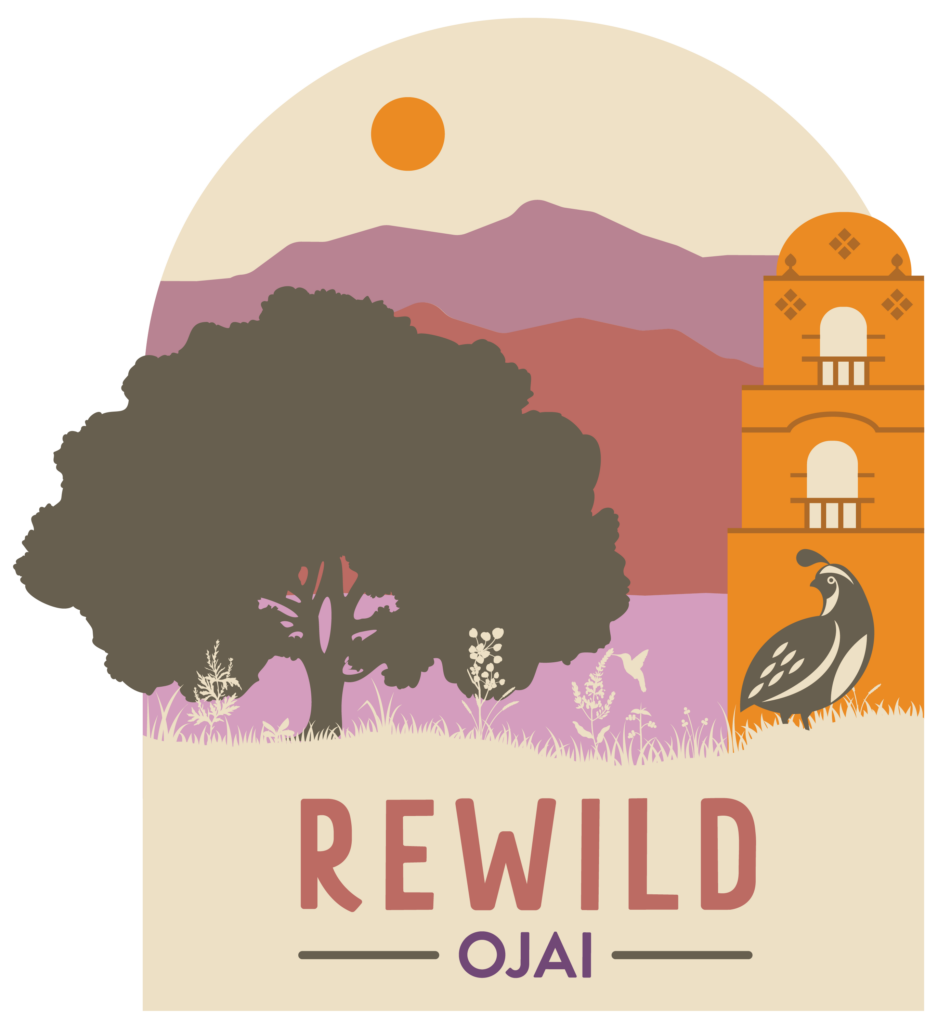
3. A robust website:
With the help of pro bono technical services, the organization’s website is being redesigned and will include a section on the program that is a thorough and informative resource for the public and program participants. An ancillary benefit is to reduce demands on limited staff time to answer routine questions and thereby extend capacity.
4. Concurrent programming and education:
OVLC is developing a full roster of events to accompany the program. Anticipated features include a Native Plant Month, talks and educational events for landowners, and tours of demonstration gardens.
Another offering will be an educational program for landscape professionals. When OVLC conducted landscaper meetings at the outset, they learned that while landscapers are on board with native plants, they struggle with several challenges. One key concern is the expectations of clients, who may for instance want the instant gratification of large plants instead of plugs, and familiar plant choices like rosemary. “There needs to be a big shift in perception about what yards should be and should look like and we need to help landscapers have those conversations with their clients,” Parker states. For instance, in this Mediterranean climate, natives can hit a dormant period for part of the year and people need to adjust to those natural cycles, which can differ from other regions. Another issue they face is the training of installation and maintenance crew, who are often unfamiliar with the specific requirements of native plantings.
To meet these needs, OVLC has partnered with the Theodore Payne Foundation to make its California Native Plant Landscaper Certificate Program available to Ojai Valley landscapers. An initial cohort of 30 will go through this 4-week program in Fall 2023 via a mix of self-paced, online and hands-on instruction, conducted in both English and Spanish. The course covers everything from native plant identification to irrigation efficiency, landscaping techniques, site evaluation and client marketing. Certified landscapers will get a discount at the OVLC nursery, and be retained on an internal list available to share with program participants upon request.

5. Certification and yard sign program:
This central aspect of the program will emphasize broad participation via graduated levels of certification. “Gardening and buying plants is expensive, so we want to set a low barrier to entry and have different levels where you can eventually reach a gold standard. We want everybody to feel like they can be a part of it,” says Parker. She anticipates engaging volunteers to conduct yard visits and make recommendations. A plan is underway to partner with local Master Gardeners, who need to fulfill volunteer hours on an ongoing basis. An OVLC volunteer who is also a Master Gardener board member aims to deliver native plant education through the Master Gardener program and thus help develop an effective cadre of volunteers for Rewild Ojai. When it comes to plant recommendations, Maloney underscores that in such an extreme climate, it is critical to take into account landscape conditions, emphasizing the importance of the capacity to provide hyper-localized, site-specific recommendations. On a south facing slope for example, establishing oaks would be futile, and the landowner would be better served by being steered toward chaparral species.
The certification and yard sign program aims to dovetail with the Homegrown National Park (HNP) initiative. Program participants will be encouraged to register themselves on the HNP map after achieving certain levels of certification. “This will be an additional selling point,” Parker notes. “Support your local yard sign program, and then join this national movement.” Currently only two yards in the area are registered on the map, and one is Parker’s own. The only way is up!
Reflecting on the main learning from the past year-and-a-half since the inception of the idea of Rewild Ojai, Parker notes: “I do think that it has been a good decision for us to take it slow and not launch until everything is ready…I think if we launched and we were not fully able to support the community, there would be disappointment and the initiative could fall flat.”
Measuring success and some takeaways
Defining the metrics for success for a nascent program is an ongoing effort. Eventually, Parker says, external/ecological measures of success may include “how much biodiversity the conversion to native species supports—and to see if there is a balance we can create between a fire-fuel mosaic and biodiversity.”

Meanwhile, some internal quantitative and qualitative measures to determine short-term success are already in place. These include, for example, completing the infrastructure to support the expanded nursery, nursery sales of 15,000 plants by Year 2, and tracking growth in properties participating in the yard sign program. Over the longer term, success will be determined by whether Rewild Ojai is perceived as the go-to place for rewilding as measured by the number and acreage of properties engaging with Rewild Ojai on restoration work. Maloney also envisions a time when this will open up conversations with entities such as water supply companies, to incentivize, for example, the choice to convert an orchard to an oak woodland through rate changes.
We look forward to catching up with Rewild Ojai after its official launch and beyond, to document what other lessons they have learned along the way. Meanwhile, here are some takeaways that OVLC proposes for other fledgling microhabitat programs:
- Ensure access to native plants: While building a nursery from scratch is likely cost-prohibitive for most, organizations with existing nurseries may have an excellent launchpad for a microhabitat program that could, in turn, sustain and even grow nursery operations. One way or the other, affordable and easy access to ecotypic native plants, either through an in-house nursery or through partnerships and incentives with private nurseries is an essential element. At the end of the day, supply must meet demand. On this point Parker reflects, “Starting a nursery to fund a program would be a huge undertaking. However it is not clear that a program could take off without easy access to a good nursery.”
- Anchor messaging in knowledge of the specific community: Concepts such as wildlife/pollinator habitats, habitat connectivity, and environmental empowerment at the individual scale are compelling concepts to incorporate into marketing and fundraising. In the case of Rewild Ojai, branding and marketing also respond to the particular culture of the community.
- Start with high net worth donors. Large donations can form the base that potentially begets smaller donations down the road. Together they build a sustainable pyramid of donors, typical of a campaign one might do for a capital project.
- Include the needs of the professional landscaping community—designers, installers, maintenance companies, in program design and educational efforts. They are a vital conduit to achieving scale and sustainability in microhabitat efforts.
- Tap into the organization’s volunteer and donor community for expertise: As Rewild Ojai demonstrates, donors and volunteers can be excellent sources of support with branding, marketing and technology.
- Invest upfront in thinking through and establishing essential programmatic elements before launch, so that the program can meet expectations, succeed, and beget even more success.

Village and Wilderness amplifies the work of community-based innovators by supporting efforts to discover, prove and share replicable climate adaption strategies. Our flagship project is the Microhabitat Program Incubator.
This case study is part of a series of written resource materials that Village and Wilderness is developing to share lessons and best-practices across existing and emerging microhabitat programs.
What is a Microhabitat Program?
Community-based programs designed to convert small patches of land into ecologically useful habitat are emerging everywhere. From rewilding private land, to establishing urban shade gardens, bioswales and pollinator-friendly roadside verges and farmland margins—restoring ecosystem function in the fragmented landscape is the common theme.
While “backyard habitat programs” is a term that has been commonly used to describe many of these efforts, we propose more encompassing terms—such as microhabitat programs. We believe that these programs are part of a broader movement comprising the universe of community-based and individual efforts and to restore ecosystem function and ecological productivity to the fragmented landscape.

